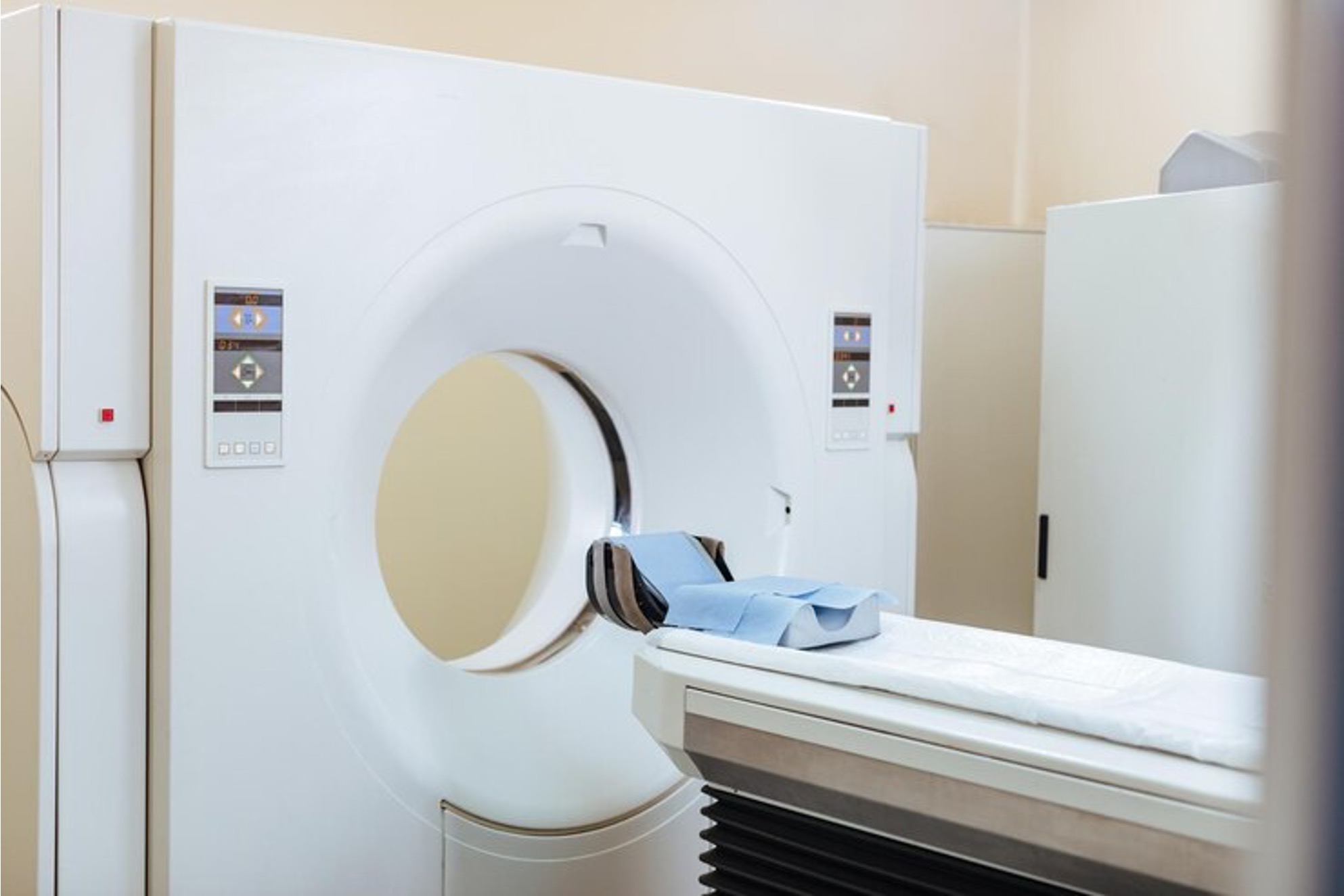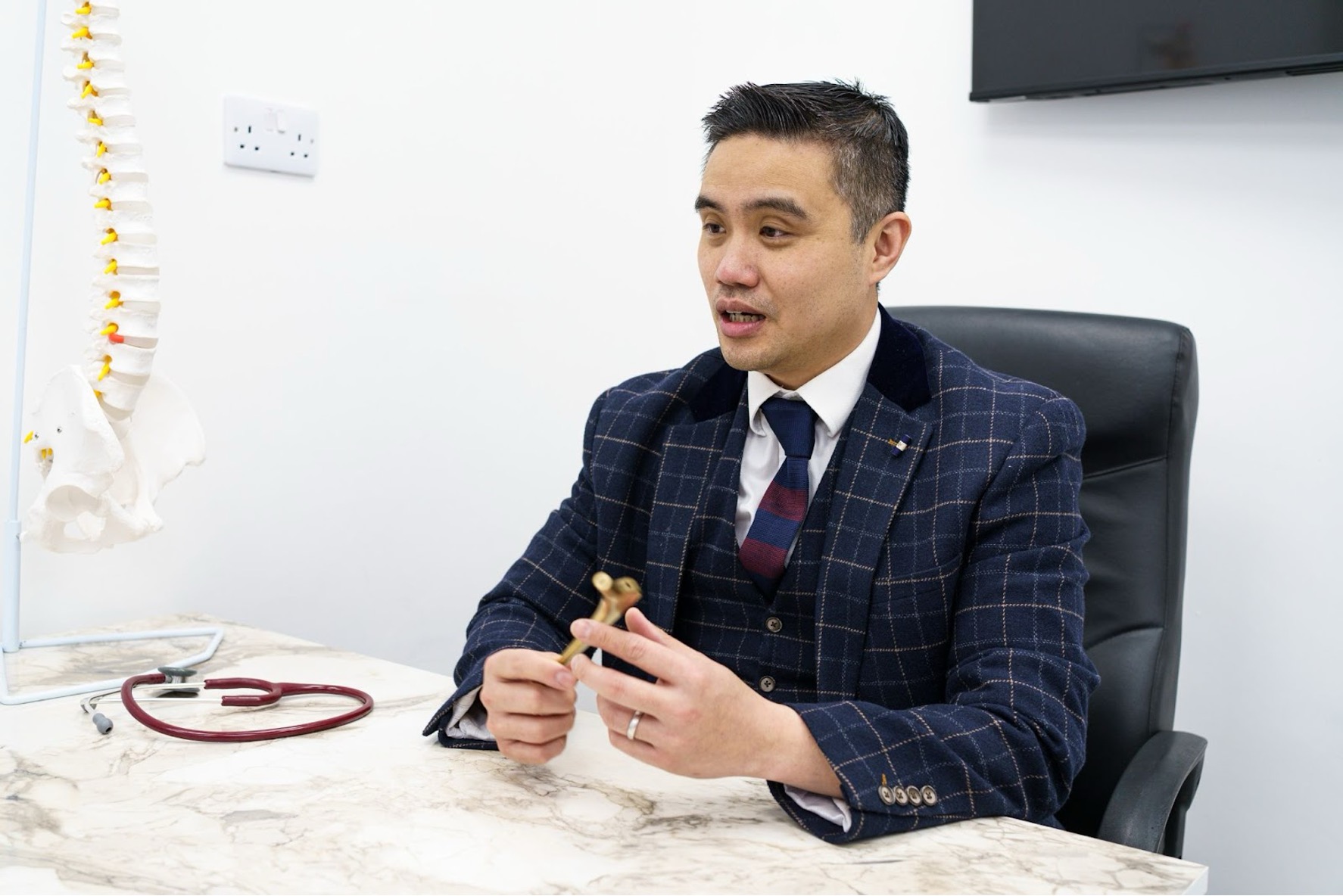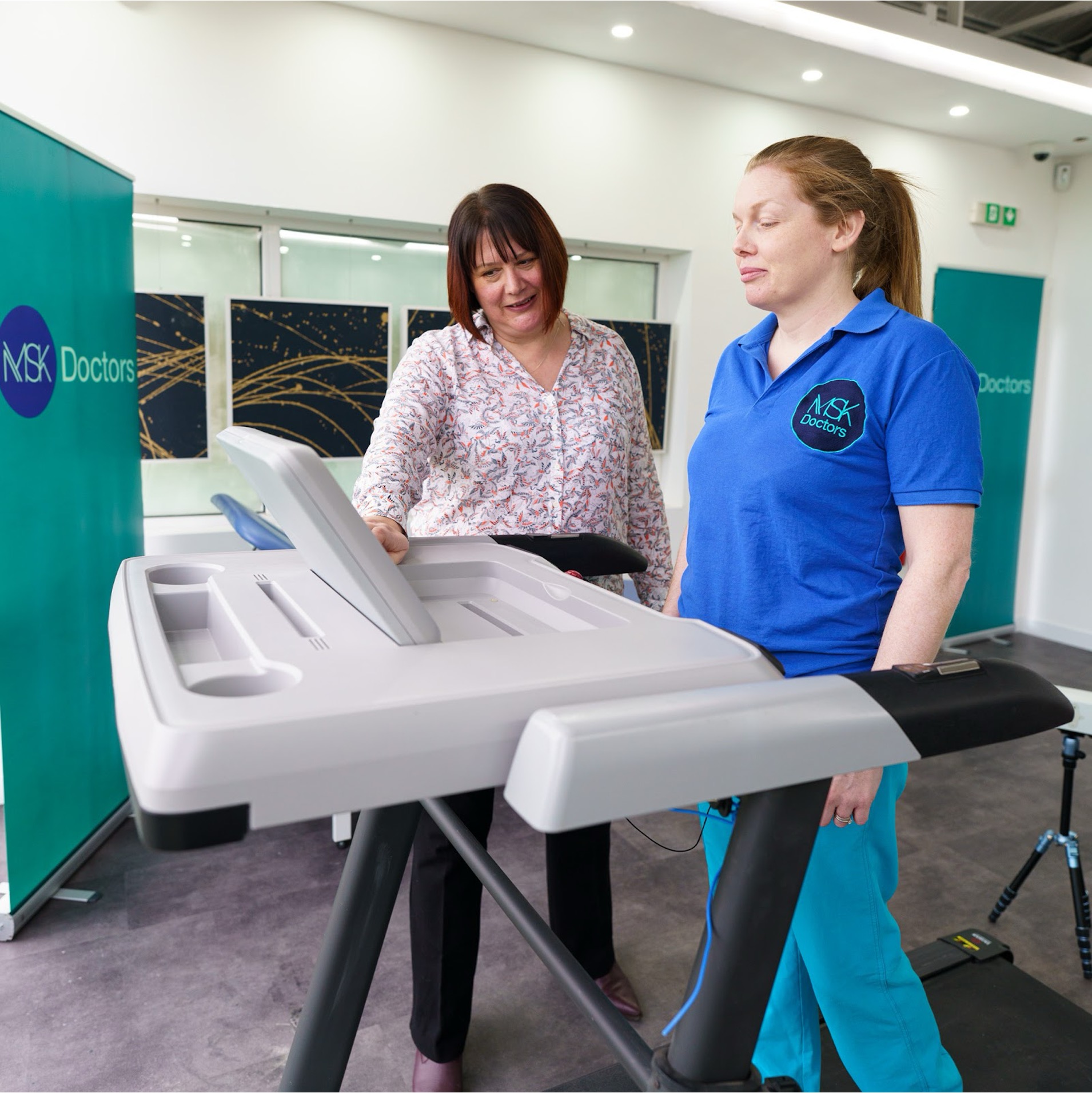Groin Pain: Symptoms, Causes, Treatment & Exercises
:format(webp)/cdn.mskdoctors.com/storage/2025/2/OfkSWzaPGUixz242GVB9S8AEcrKstNNh.jpg)
Key Takeaways
-
Groin pain happens where your lower abdomen meets your upper thigh. It can feel sharp, stabbing, or like a dull, ongoing ache.
-
Athletes are more likely to experience groin pain, especially in sports with sudden direction changes, like soccer, hockey, basketball, and tennis.
-
Diagnosis requires a medical history review, physical exam, and imaging tests like MRI, CT scans, or ultrasound.
-
Treatment includes rest, physical therapy, pain management, and advanced options like injections or surgery if needed.
-
MSK Doctors provides personalised care without a GP referral, using innovative technology and approaches.
Groin Pain Explained
Groin pain happens in the area where your lower abdomen meets your upper thigh—a complex body part with muscles, tendons, and other important structures. The pain can be sharp and sudden or a dull ache that lingers, affecting daily life and athletic performance.
|
Symptoms of Groin Pain
How It Feels
Some people feel a pulling or tearing feeling, especially during physical activities. Others describe a burning or stabbing pain that can be intermittent or constant.
The pain is not always confined to the groin area and may radiate to surrounding regions like the lower abdomen, inner thigh, or lower back, creating a complex pattern of symptoms.
When It Hurts Most
Activities like walking, running, jumping, and climbing stairs can make the pain worse.
Some patients even report sitting or standing for too long, coughing, or sneezing triggering discomfort.
Other Signs to Look Out For
Swelling in the groin area, bruising or discoloration, muscle weakness, and reduced range of motion are common.
Some patients also report visible or palpable lumps, and extreme tenderness when touching the affected area.
Sudden vs. Gradual Pain
Some people experience a gradual onset, while others recall a sudden, sharp pain occurring during a specific activity.
The intensity often fluctuates throughout the day—with the pain usually becoming worse in the morning or after periods of inactivity.
Causes of Groin Pain
Muscle Strains & Sports Injuries
Muscle strains are one of the most common causes of groin pain.
Sports like soccer, hockey, basketball, and tennis put extra strain on the groin muscles—which can result in minor strains and even full muscle tears.
Groin pain can also come from conditions like athletic pubalgia (sports hernia), hip labral tears, stress fractures, and osteitis pubis.
Hernias & Hip Problems
Hernias, including inguinal and femoral hernias, can cause groin pain, even if there’s no visible bulge.
Hip issues like osteoarthritis, bursitis, hip dysplasia, and labral tears can create discomfort in the groin area.
Nerve Pain & Other Conditions
Nerve compression syndromes, sciatica, meralgia paresthetica, and herniated discs can refer pain to the groin, making diagnosis challenging.
Urological & Reproductive Factors
Sciatica, nerve compression, and herniated discs can cause pain that spreads to the groin.
Urological and gynecological conditions like testicular torsion, ovarian cysts, endometriosis, and pelvic inflammatory disease can also contribute to groin pain.
Diagnostic Approach

Advanced imaging helps identify the root cause of groin pain for targeted treatment.
Medical History Assessment
-
A doctor will ask when the pain started, what makes it worse or better, and how it affects your activities.
-
They will check your range of motion, muscle strength, and tenderness in the area.
Advanced Diagnostic Imaging
-
MRI: Helps find muscle tears, nerve problems, and other soft tissue injuries.
-
CT Scan: Provides a detailed view of bones and joints.
-
Ultrasound: Used to check for fluid buildup, hernias, and soft tissue injuries.
-
X-rays: Can identify fractures or joint problems.
Treating Groin Pain
The RICE Method
The first step is to try some at-home remedies, like RICE:
-
Rest: Reduce activities that make the pain worse—walking, running, jumping, etc.
-
Ice: Apply for 15-20 minutes every few hours to reduce swelling.
-
Compression: Use a wrap or support garment to minimise discomfort and swelling.
-
Elevation: Raising your leg can help reduce swelling.
Pain Relief Options
Nonsteroidal anti-inflammatory drugs (NSAIDs) such as ibuprofen and naproxen address pain and reduce inflammation. In more complex cases, stronger pain medications or muscle relaxants may be prescribed—for example, corticosteroid injections.
Advanced Treatments
If conservative treatments don’t work, ultrasound-guided injections and surgical interventions may be needed.
Athletes often need specialised rehabilitation protocols that take into account the unique physical demands of their specific sports.
Rehabilitation Exercises for Groin Pain
Stretching Exercises
There are two stretching exercises which can help you recover from groin pain: the butterfly stretch and the standing groin stretch.
To do a butterfly stretch, sit with the soles of your feet together and press your knees down gently.
To do a standing groin stretch, stand with your feet wide apart, then bend one knee while keeping the other leg straight to stretch the inner thigh.
Strength-Building Exercises
You can also do some strength-building exercises like the abductor squeeze and the side-lying leg lifts.
First, lie on your back, place a ball between your knees, and squeeze it gently—that’s an abductor squeeze.
Then, lie on one side and lift your top leg slowly to strengthen the hip and groin muscles—that’s a side-lying leg lift. Do this on both sides.
Core Stability Work
Try modified planks to build core strength—this reduces pressure on the groin and helps prevent future injuries.
How MSK Doctors Can Help Manage Groin Pain

MSK Doctors provides personalised care for groin pain issues.
At MSK Doctors, we connect patients with expert doctors and surgeons specialising in musculoskeletal health. Our comprehensive network brings together highly skilled musculoskeletal doctors, orthopedic surgeons, sports medicine specialists, and GPs with specialist expertise in MSK medicine. We carefully curate our directory of specialists to ensure patients have access to trusted and experienced professionals who provide personalised and effective musculoskeletal care.
Our platform integrates cutting-edge motion analysis technology to support comprehensive treatment approaches. We use advanced musculoskeletal motion AI platforms to track movement patterns, evaluate performance, and support injury prevention and rehabilitation.
Don't let groin pain limit your life—book your consultation with MSK Doctors today.

Innovative rehabilitation technology supports faster recovery from groin pain.
Frequently Asked Questions (FAQ)
What is groin pain?
Groin pain is discomfort experienced in the area where the abdomen meets the upper thigh, caused by muscle strains, injuries, nerve issues, or medical conditions.
What are the most common causes of groin pain?
The most common causes are muscle strains, sports injuries, hernias, hip problems, nerve compression, and reproductive health issues.
How can I prevent groin pain?
To prevent groin pain, stretch regularly, warm up before exercise, and gradually increase activity intensity.
When should I seek medical attention for groin pain?
Seek medical attention if pain lasts more than a few weeks, limits daily activities, or is accompanied by swelling, fever, or severe discomfort.
How can MSK Doctors help me manage my groin pain?
At MSK Doctors, we provide personalised musculoskeletal care with no GP referral needed, using advanced technology for accurate diagnosis and treatment.
:format(webp)/cdn.mskdoctors.com/storage/2025/5/ZfQ6gzRIzszsowJqOQGDJDwD3J4MbpN9.jpg)
:format(webp)/cdn.mskdoctors.com/storage/2025/5/wJNi2HzO1mX0VClrU6WeaXZQKmN5sSmZ.jpg)
:format(webp)/cdn.mskdoctors.com/storage/2025/5/PbgR15zgUrhJ98ptgUjvWRY6lFp4RBJl.jpg)
